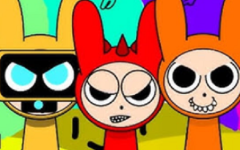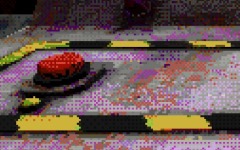Advertisement
Sprunki, But It’s Labubu
Advertisement

Sprunki, But It’s Labubu offers an audio-based sandbox where players construct simple looped music by arranging animated characters on a timeline. The game replaces typical buttons or icons with stylized Labubu dolls—each one tied to a unique sound loop. When a character is placed in one of the available slots, it begins contributing to the overall rhythm. Players can mix several loops together, forming short repeating sound patterns. The interface is deliberately minimal, and the experience encourages users to learn through play rather than instruction. It does not provide goals, rules, or outcomes—its entire structure centers around listening, experimenting, and observing what happens when different loops interact.
Loop-Based Play with Light Visual Design
The character-based sound grid is designed to be easy to understand. There are nineteen different Labubu figures available, each producing a different sound: some generate beats, others contribute melody or ambient effects. The player is given a fixed row of slots where these characters can be dropped in any order. The resulting combinations generate a repeating loop that adjusts in real time based on who is currently placed on the grid. The process is immediate, requiring no load times, menus, or complex options. The player can also toggle between a day mode and a night mode, each affecting the visual style and subtly adjusting the tone of the loops. This allows for a change in mood without changing the core mechanics.
Players interact with the following core components:
- A row of empty slots used to activate loops
- Nineteen Labubu characters, each linked to a specific loop
- Drag-and-drop controls that work instantly
- Light and dark modes that affect mood and appearance
- Reversible combinations that can be altered at any time
Atmosphere Without Progression
There is no level structure, scoring, or feedback system in Sprunki, But It’s Labubu. The entire experience is about moment-to-moment decision-making through sound. Players are invited to build combinations, then rearrange or delete them with a single click. Because of this, each session can be short or long depending on how the player approaches it. The lack of fixed objectives turns the game into an open space for exploration. While the features are limited by design, this allows focus to stay on listening and interacting rather than advancing or achieving. The overall tone remains consistent whether the player is using one loop or the entire row.






















































































































































